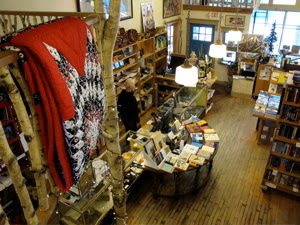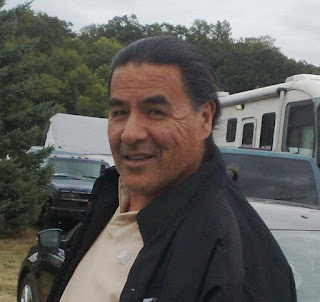Freedom of speech: Louise Erdrich’s Minneapolis shop, Birchbark Books, sells great books, saves languages

Published in Indian Country Today in 2011. For more on topics like this, see my book, American Apartheid: The Native American Struggle.... I confess, I love Ojibwe novelist Louise Erdrich’s Minneapolis shop, Birchbark Books, and you can, too. In fact, you can admit to anything you want there, in an honest-to-God confessional Erdrich rescued from a bar and set up in the corner of the multi-leveled bookstore. Find Birchbark Books
in a tiny strip of stores in a leafy neighborhood, along with Kenwood Café, locally popular for its home-style soups and sandwiches, and Bockley Gallery, where exhibits often feature Native artists. Recently, the gallery showed colorful, slyly humorous paintings and prints by Jim Denomie, Lac Courte Oreilles Band of Ojibwe . The cozy store offers lots of spots where shoppers can enjoy a rich array of images and experiences. Kids can climb into a treehouse-like toy-filled loft, while adults curl up and read in sunny corners. If you want absolution f
